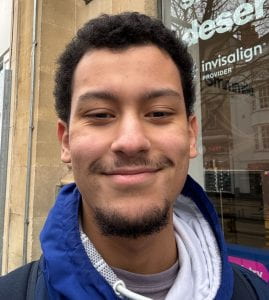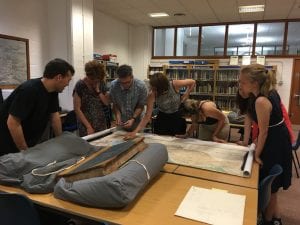Through the development of the Temple Quarter Enterprise Campus (TQEC) and our network of civic spaces, we aim to deepen our connections with Bristol and work alongside a wide range of partners to find solutions to most pressing issues that affect all our lives.
Tom Sperlinger is Professor of Literature and Engaged Pedagogy and the Academic Director (Civic Spaces). We spoke with Tom about the impact of the new Temple Quarter Enterprise Campus on local community engagement and our evolving network of spaces to work with local people and organisations.
With just under two years until TQEC opens, what are you looking forward to working on over the coming year and beyond?
We’re at a really exciting point! We’ve been imagining and designing civic spaces in the new campus for a long time – and they’re now being built.
The main building will feature the Bristol Rooms, a place for staff and students to work with a wide range of partners and communities on shared challenges, and the Story Exchange, a place for curating conversations between people with very different perspectives and experiences.

These spaces will enable the University to be a meeting point for expertise from across society to work on urgent issues, ranging from the climate crisis to the future of technology.
One of our exciting challenges over the next two years is to find the right ways to operate these spaces and integrate them with our network of micro-campuses in Barton Hill and Hartcliffe. Through a recent Civic Connections funding call we are kicking off a series of collaborative projects that will take place at the micro-campuses.
The projects cover a really diverse range of activities. The first project in the Hartcliffe Micro-campus in June is a collaboration with the Vet School, the Student Union Paws society and Bristol Animal Rescue Centre who will run drop-in sessions to learn about pet care. One of the recent projects in Barton Hill was exploring Trauma-Informed Practices for translators and interpreters.
We want to bring the University to life in these locations through engaged research, teaching or outreach and create new offers for local communities.
What is the network of micro-campuses?
We created a micro-campus in Barton Hill, after being invited to rent a space at the Wellspring Settlement, about 15 minutes’ walk from TQEC. It’s a place for a full range of University activities – teaching, research, collaboration and more. All our faculties use it, plus many Professional Services teams. Despite its small size, it welcomes over 160 users weekly and has partnered with 58 local and national organisations in the past year.

We’ve just opened a similar space at the Gatehouse Centre in Hartcliffe and, thanks to a £178,000 funding award from the Office for Students we will be co-developing a new micro-qualification with local partners and communities. We’re looking forward to building new partnerships and exploring how the University can contribute to the skills and enterprise ecosystem in that area of the city.
How do these spaces relate to TQEC?

The network of civic spaces we’re creating as a result of TQEC – including in the new campus and within nearby communities.
We sometimes underestimate what a once-in-a-generation shift TQEC is for the University. It’s a real reinvention of who and where we are in the city. We want to ensure we make the most of that opportunity, by opening the University up to a much broader range of partners (large and small) and local communities.
According to the recent Sutton Trust Opportunity Index, East and South Bristol are listed in the bottom 10 areas for opportunity in the country. Our micro-campuses are seeking to help improve this stark statistic for communities in these areas, not through outreach but by rethinking the model of the university in these places and helping to make it part of people’s lives.
That’s good for universities too. Covid-19 taught us that global challenges are increasingly being experienced locally. We’re entering an era of uncertainty with the climate emergency, rapidly changing technology, mass migration, and more.
All these challenges hinge on questions of participation; who has a voice in designing the solutions and who benefits from them? The civic spaces model allows us to ensure the University responds to significant global challenges in ways that acknowledge local expertise and brings stakeholders together to devise local responses.
How else is the TQEC civic engagement programme benefitting Bristol?
Working with colleagues in HR, TQEC has been a catalyst for creating the Apprenticeships and Employment Outreach team, led by Rebecca Scott. This team has made a huge difference to the employment opportunities we offer locally.
We’re a key participant in the Share to Support scheme, gifting our unspent apprenticeship levy to smaller businesses, creating 89 apprenticeships across 43 companies. We’re also on track for 1% of our workforce to be apprentices, and thanks to the efforts of the team, were recently named regional Social Justice Employer of the Year by the Department for Education.
What do you enjoy most about your role on TQEC?
I’ve learned more than I can say from this role: about project management, about different perspectives on the University’s role – and about how to be patient! I’ve especially enjoyed working creatively with such a broad range of people, within and outside the University.
I’m really looking forward to working with more partners in our micro-campuses and in TQEC when it opens next year. If you’re interested in getting involved, we’d love to hear from you. Take a look at our webpages to find out how.



